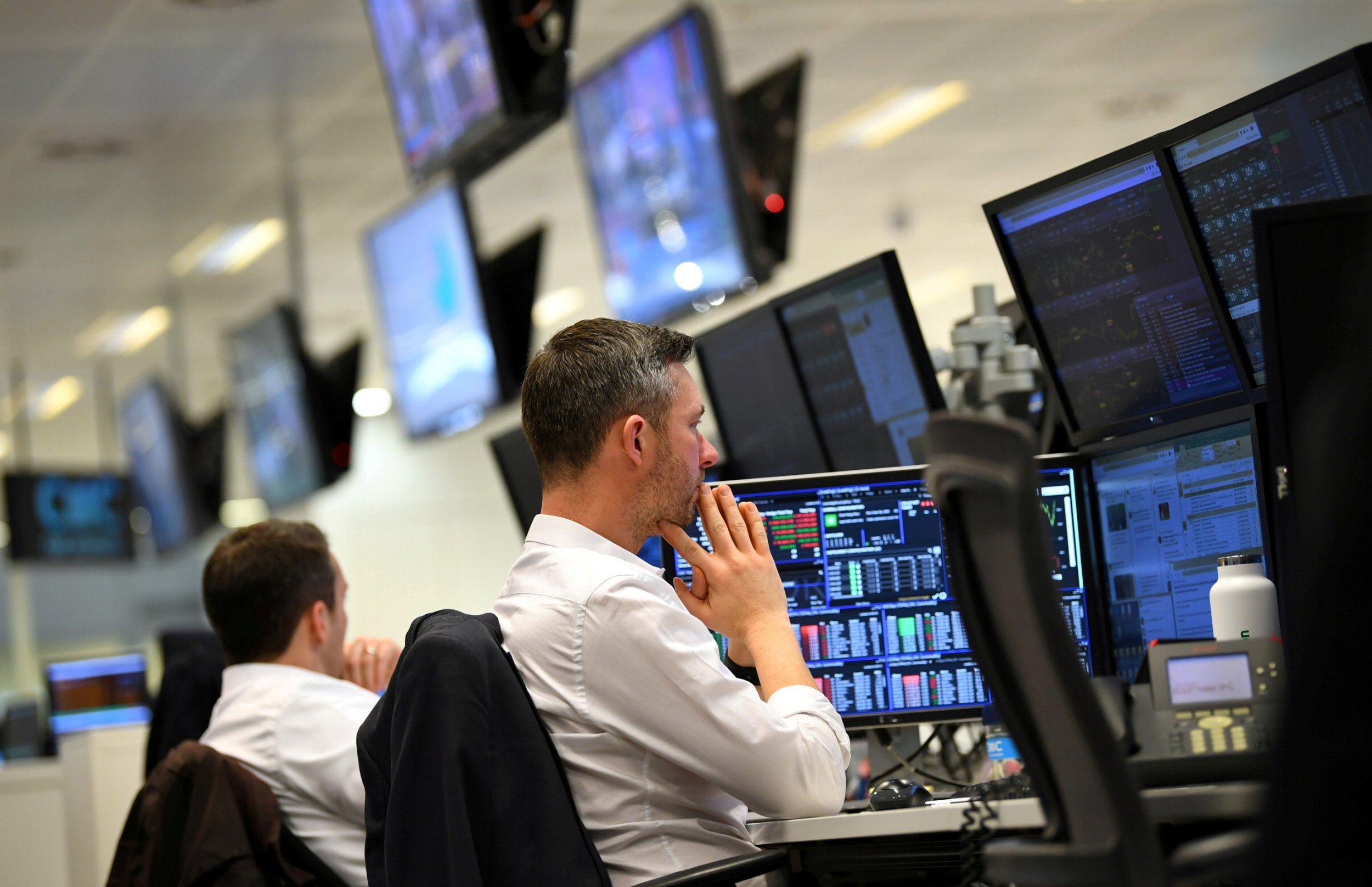Inverted yield curve: Does the bond market really signal we’re heading for a recession?
Market indicator that preceded seven previous US recessions has flipped - what does this mean?

Your support helps us to tell the story
From reproductive rights to climate change to Big Tech, The Independent is on the ground when the story is developing. Whether it's investigating the financials of Elon Musk's pro-Trump PAC or producing our latest documentary, 'The A Word', which shines a light on the American women fighting for reproductive rights, we know how important it is to parse out the facts from the messaging.
At such a critical moment in US history, we need reporters on the ground. Your donation allows us to keep sending journalists to speak to both sides of the story.
The Independent is trusted by Americans across the entire political spectrum. And unlike many other quality news outlets, we choose not to lock Americans out of our reporting and analysis with paywalls. We believe quality journalism should be available to everyone, paid for by those who can afford it.
Your support makes all the difference.Talk about recession has intensified after a relatively rare financial phenomenon in the bond markets portended deepening economic gloom.
An "inverted yield curve" may sound like the kind of obscure financial terminology that needn't worry anyone outside the doors of big banks but it has, to some degree, predicted the last seven or more US recessions.
So what exactly is it? And should we be worried?
What’s going on in financial markets?
A closely watched indicator has signalled that the markets are becoming increasingly pessimistic about the future of the US and UK economies.
Traders and economists are concerned that that the yields are higher for short-term bonds than for bonds maturing further away in the future. That is unusual as investors generally want a larger return if they are going to lock their cash away for longer.
The last time it happened in the US was in 2007.
What are bond yields?
They are, effectively, the rates of annual interest paid out to investors by bonds.
The yield on short-term US government bonds is normally well below the yield on equivalent long-term bonds. This results in an upward sloping “curve”, with bond yields gently rising as the redemption date of the bond stretches into the future.
So what’s an inversion?
Sometimes the yield on short-term bonds rises, bringing short-term borrowing rates close to long-term rates, thus flattening the profile of the overall borrowing yield curve.
And sometimes the yield on short-term bonds can even go higher than that of long-term bonds.
This isn’t just a flattening, but an “inversion”.
What does in mean?
It implies first of all that investors, fearing for the future, are looking for safety. US stock markets have fallen sharply as risky assets like shares have been sold off in favour of bonds which are government-backed and pay a fixed return.
It also signals that investors think a recession is due which would prompt central banks - in this case the Federal Reserve and Bank of England - to cut interest rates in the future.
How concerned should we be?
Major economic downturns in the US, but also in other advanced economies, have usually been preceded by this economic indicator.
A recession in the US, the planet’s biggest economy, would inevitably hit the rest of the world, including the UK hard.
But there have also been examples were the yield curve inverted but no recession followed, such as in the UK in the early 2000s.
In the past there has also been a significant lag of around 10 months to three years between this indicator and a subsequent recession.
Why has this happened?
News on both the UK and US economies has been pretty negative of late. Under Boris Johnson the risk of a no-deal Brexit has risen sharply and last week we learned that the UK economy had unexpectedly shrink in the last quarter. This week, inflation came in higher than expected.
The US outlook is being damaged by trade tensions with China which have seen the Trump administration hit the majority of Chinese imports with tariffs. Beijing has responded in kind with its own tariffs on US imports.
Marc Ostwald, chief economist at ADM Investor Services International, said the latest inversion of the yield curve said more about the global economy as a whole than the US in particular.
“We are looking at Germany, we are looking at, above all, China and we are going, ‘This isn’t good, these are meant to be motors of global trade’.”
China's latest figures show that industrial output grew much weaker than forecast.
So how worried should we be?
We should be wary, but not panicking.
The US yield curve is not a failsafe predictor of recession. And there are various technical reasons why it may be distorted at the moment.
Yet the voices arguing that the global financial system is not yet safe are credible and should be heeded regardless of whether or not we are about to enter a new global recession.
Join our commenting forum
Join thought-provoking conversations, follow other Independent readers and see their replies
Comments